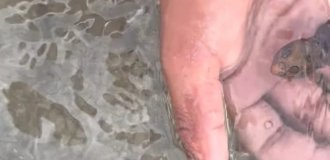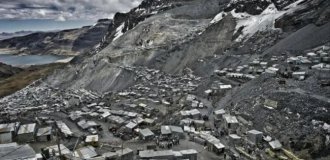Rare and interesting photographs from the front lines of World War II (21 photos)
I present to you a selection of colorized photographs from World War II—shots spanning various fronts and both warring coalitions. These include not only scenes from large-scale battles, but also the everyday lives of soldiers and civilians, captured during the most tragic period of the 20th century. 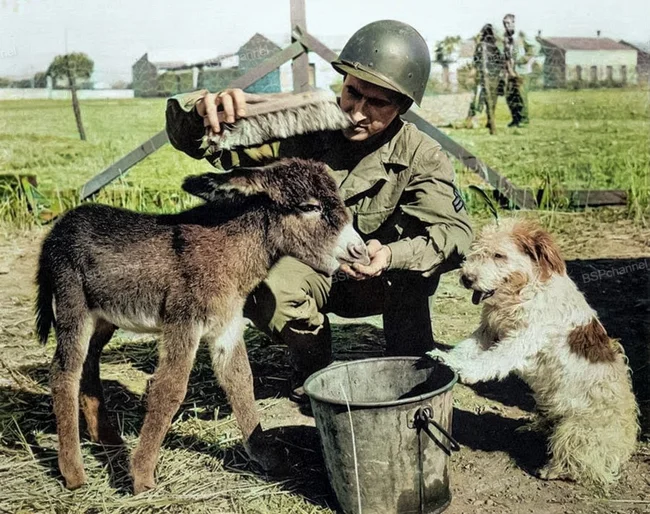
Soviet Ambassador to the United Kingdom Ivan Mikhailovich Maisky speaks at a ceremony at the Birmingham Railway Carriage and Wagon Company plant in Birmingham, marking the transfer of the first tanks to the Soviet Union under the Lend-Lease program. September 1941. 
Dutch Resistance members hear the news of Hitler's death on the radio, 1945. 
Płaszów concentration camp commandant Amon Göth on the balcony of his villa, from which he fired at prisoners with a rifle. Krakow, Poland, 1943. 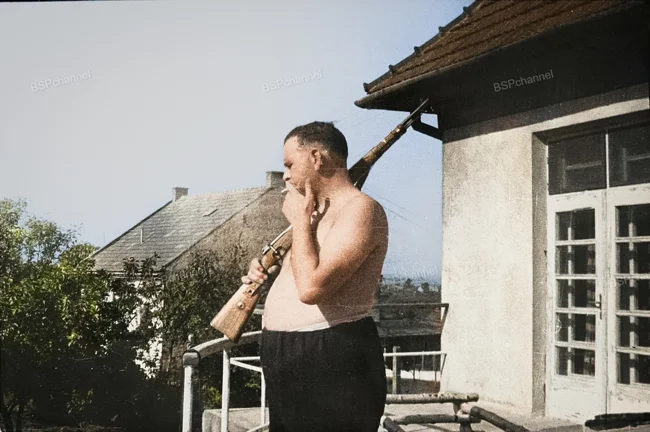
Amon Göth was one of the most brutal criminals of the Nazi regime, infamous as the commandant of the Plaszów concentration camp (now a district of Kraków, Poland). A German by nationality and a member of the SS since 1931, Göth proved himself a ruthless and sadistic killer. From 1942, he participated in the liquidation of the ghettos in Tarnów and Kraków, and in 1943, he became commander of Plaszów, a forced labor camp where thousands of Jews and Poles were held. His rule was marked by mass shootings, torture, arbitrary executions, and abuse. Göth personally murdered prisoners, often from the window of his villa located above the camp. After the war, Göth was arrested, sentenced to death by a Polish military tribunal, and hanged in Kraków on September 13, 1946.
A defused 1,000-kilogram Luftmine (German parachute mine), Glasgow, 1941. 
Second Lieutenant William Wende grooms Jenny the Donkey, the mascot of an army unit in North Africa. The terrier's name is Pito. World War II, 1943. 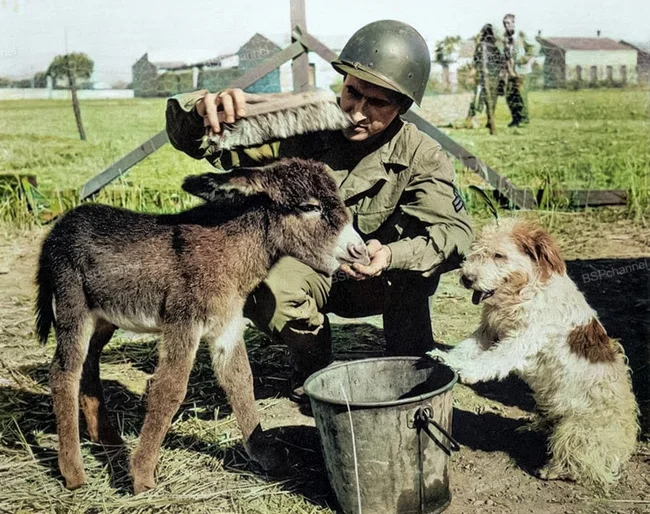
A box containing the wedding rings of thousands of prisoners, discovered by US soldiers among a Nazi treasure cache, Heilbronn Salt Mine, Germany; 1945. 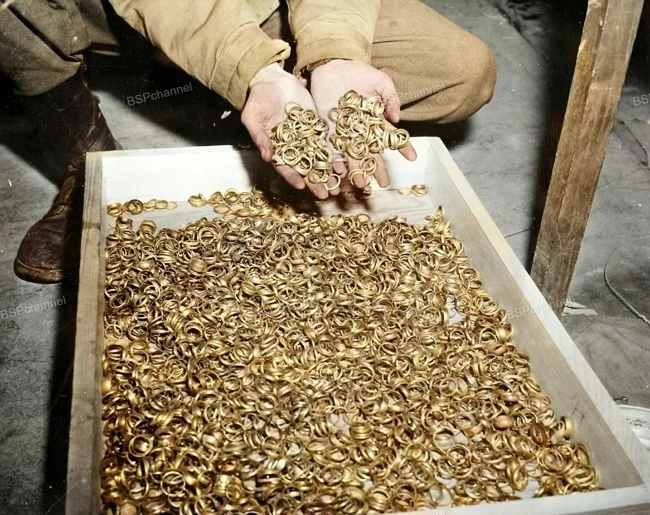
A rescue dog named Rip. England, 1940s. 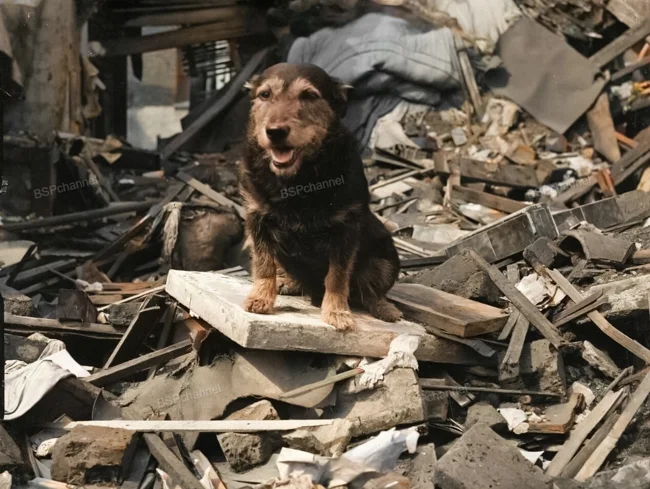
During the London Blitz in World War II, a stray puppy became a true hero. His name was Rip, and despite a lack of formal training, he instinctively searched for people under rubble, saving lives during Luftwaffe raids. Rip appeared in the London district of Poplar in 1940 and soon became the "mascot" of the local air defense. He was the first to run to destroyed buildings after the bombings and repeatedly found children and adults trapped in the rubble, helping rescuers locate survivors. For his heroic deeds, Rip was awarded the Dickin Medal, Britain's highest award for animals in the line of duty. He became one of the first "four-legged recipients" of this medal and the first rescue dog ever officially recognized for heroism during the war. He is credited with saving over 100 lives.
Royal Electrical and Mechanical Engineers (REME) repair T31 tanks, UK, circa 1943. 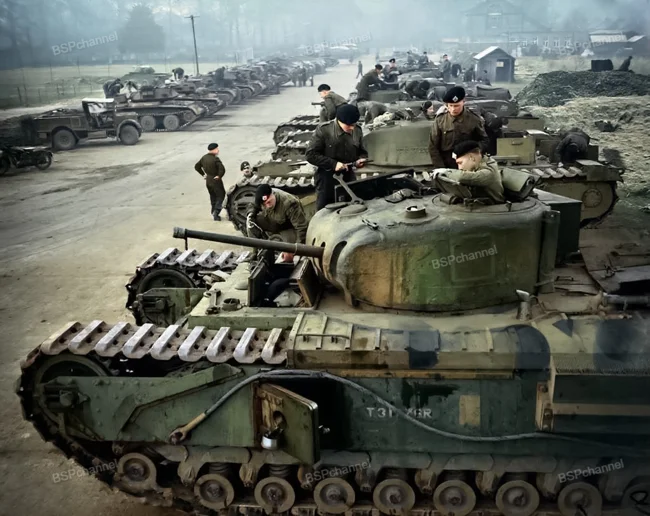
A hastily constructed defensive dugout. Hawaii, USA, 1942. 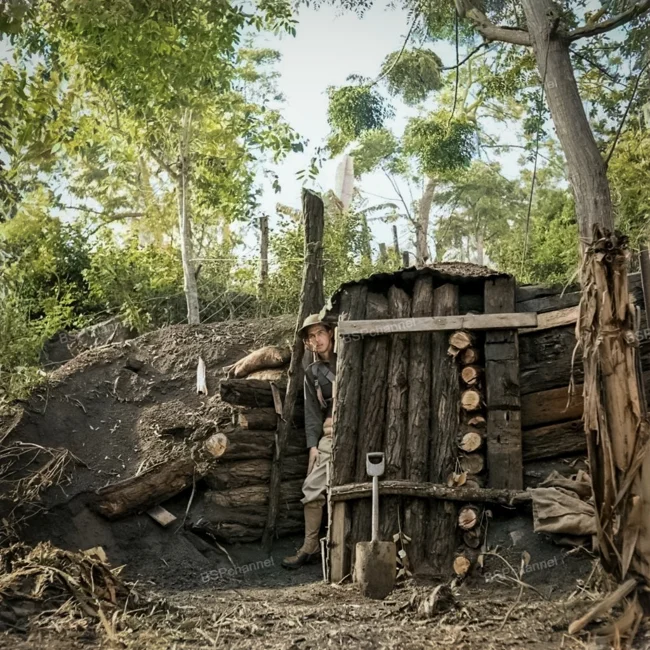
Photographer: Bob Landry.
A bomber flies near Mount Suribachi on Iwo Jima. Japan, March 1945. 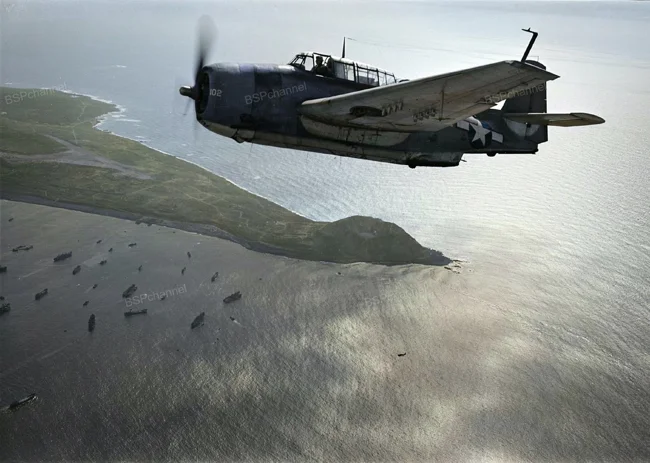
A resistance fighter taking a break. France, 1944. 
Two French patriots hold a woman while a third cuts her hair after she was accused of collaborating with the Germans during the occupation, 1944-1945. 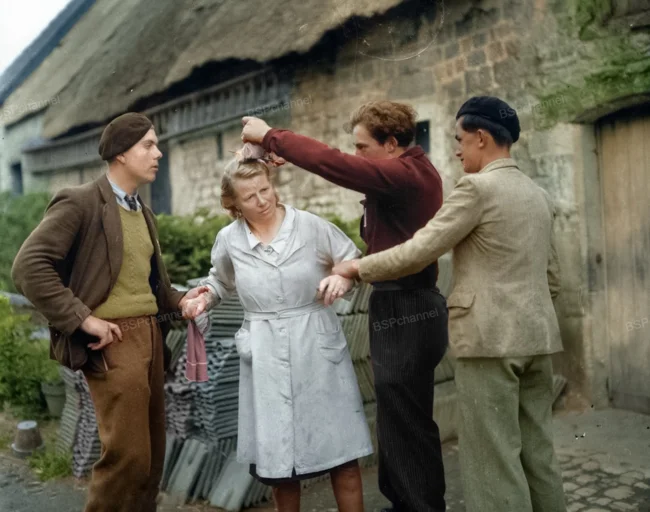
In 1944–1945, during the liberation of France from Nazi occupation, similar scenes unfolded across the country: women accused of collaboration, especially with German soldiers, were subjected to public disgrace. Thousands of women across France underwent this humiliating procedure—sometimes based on justified suspicions, sometimes out of envy, revenge, or false accusations.
Rebuilding Dresden, 1945. 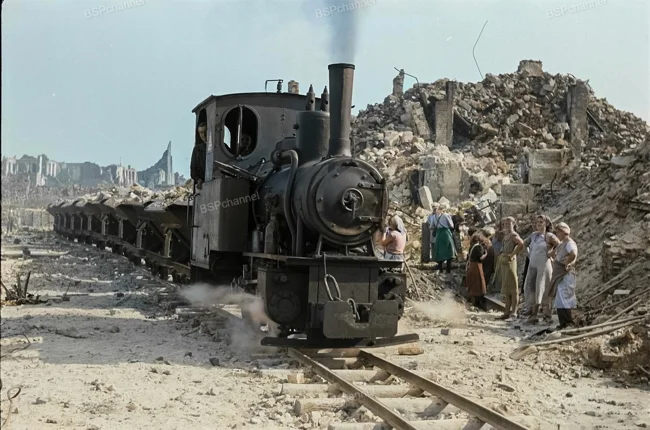
In the spring of 1945, Dresden was an apocalyptic landscape: after massive Allied bombing raids from February 13–15, the city lay in ruins. Hundreds of thousands of residents were left homeless, and the historic center—including the famous Frauenkirche, Semperoper, Zwinger, and dozens of Baroque masterpieces—was reduced to rubble and ashes. According to various estimates, between 20,000 and 25,000 people perished. As early as March–April 1945, despite the ongoing war and the approach of Soviet troops, the residents of Dresden began the first attempts at rebuilding. Women, teenagers, and the elderly manually cleared rubble, removed debris, and searched for salvaged items and the remains of the dead.
British soldiers alerted at a battery at Shornemade Fort in Britain in 1941. 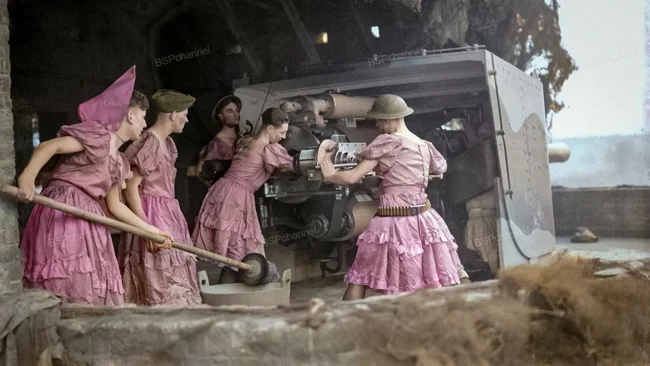
They were sent to the guns (the fort housed 6-inch naval guns) while a pantomime was being performed, in which the soldiers dressed as women. During World War II, British soldiers often staged amateur theatrical productions to boost morale. Particularly popular were buffooneries and musicals in which men played female roles—complete with wigs, makeshift costumes, and makeup. I've already published similar photos of British soldiers in a column dedicated to the First World War. Apparently, the British have a special tradition, and even a unique affinity, for theatrical transformations: dressing as women.
A British patrol observes enemy movements in the Western Desert Valley on the Egyptian side of the Egypt-Libya border in February 1942. 
Anti-aircraft defense during an Axis air raid on Algeria in North Africa on April 13, 1943. 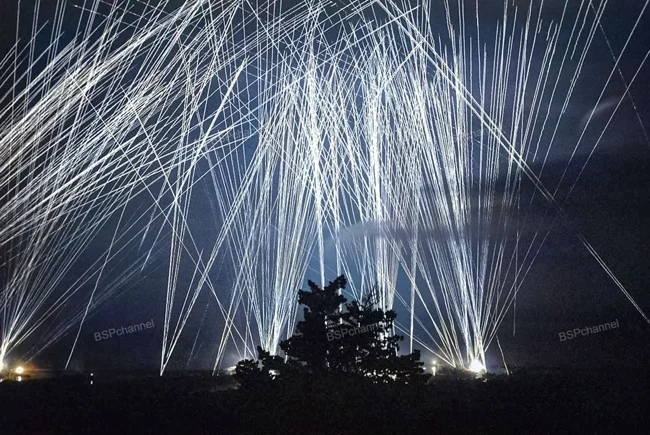
The Champs-Élysées from the Arc de Triomphe, Victory Day. Paris, France, May 8, 1945. 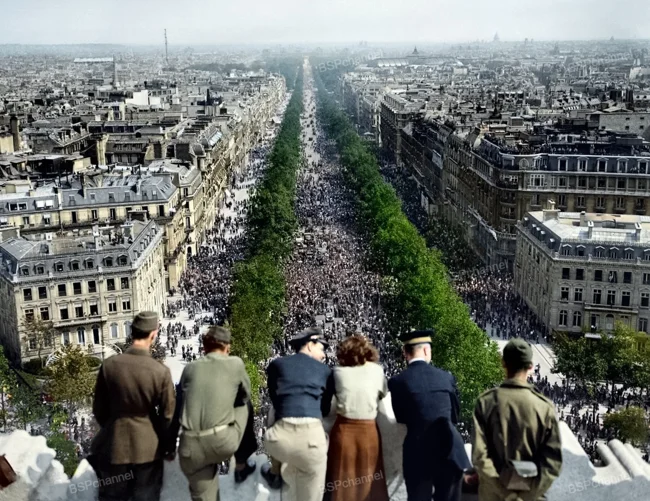
May 8, 1945, in Paris—the day the French had waited for five long years. On this day, the end of the war in Europe was officially declared: Germany surrendered unconditionally, and the long-awaited Victory had arrived. Paris, liberated from German occupation back in August 1944, now celebrated the final defeat of the Third Reich. The city erupted in jubilation: tens of thousands of people poured into the streets – crying, laughing, hugging soldiers, dancing on the barricades that had once defended the city. National anthems rang out on the Champs-Élysées and at the Arc de Triomphe, the bells of Notre Dame rang, and General Charles de Gaulle's speech was broadcast on the radio, proclaiming: "The German army is defeated... The enemy is defeated! Long live France!" People staged impromptu concerts, sang "La Marseillaise," hoisted children into the air, and kissed strangers. Many waved French and Allied flags – symbols of freedom and rebirth.
German women wash laundry in cold water on the street next to a disabled German reconnaissance vehicle. July 3, 1945. 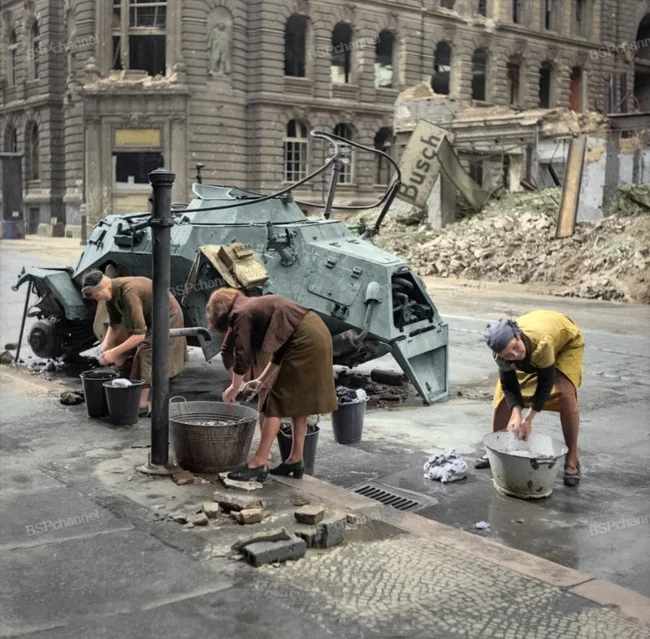
May 1945 brought Germany not just defeat, but the complete collapse of civilization. The country lay in ruins: cities transformed into apocalyptic landscapes, infrastructure destroyed, the economy paralyzed, and the population demoralized and frightened. These were the consequences the country suffered for its terrible deeds.
Americans dance on the White House lawn on the day the war with Japan ended, 1945. 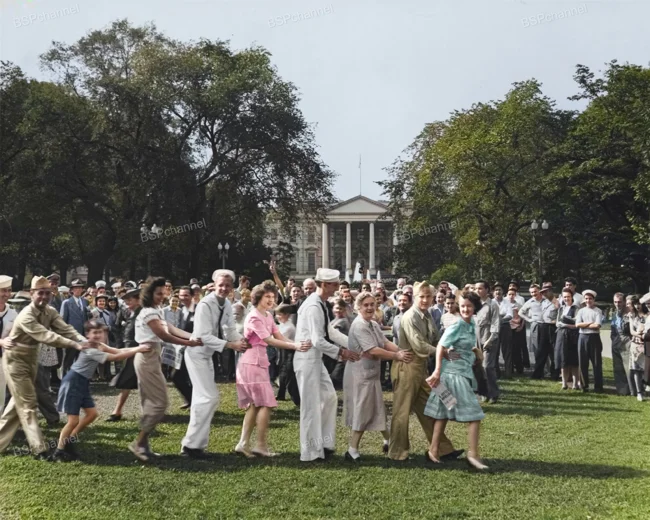
Omaha Beach. Normandy, France, 1947. 
The Normandy landings (Operation Overlord) were one of the most significant events of World War II. It began on June 6, 1944, and became known as D-Day. On this day, Allied forces—primarily the United States, Great Britain, and Canada, supported by troops from other countries—carried out a massive landing on the Normandy coast in the French-occupied zone. The operation marked the beginning of the liberation of Western Europe from Nazi Germany.







